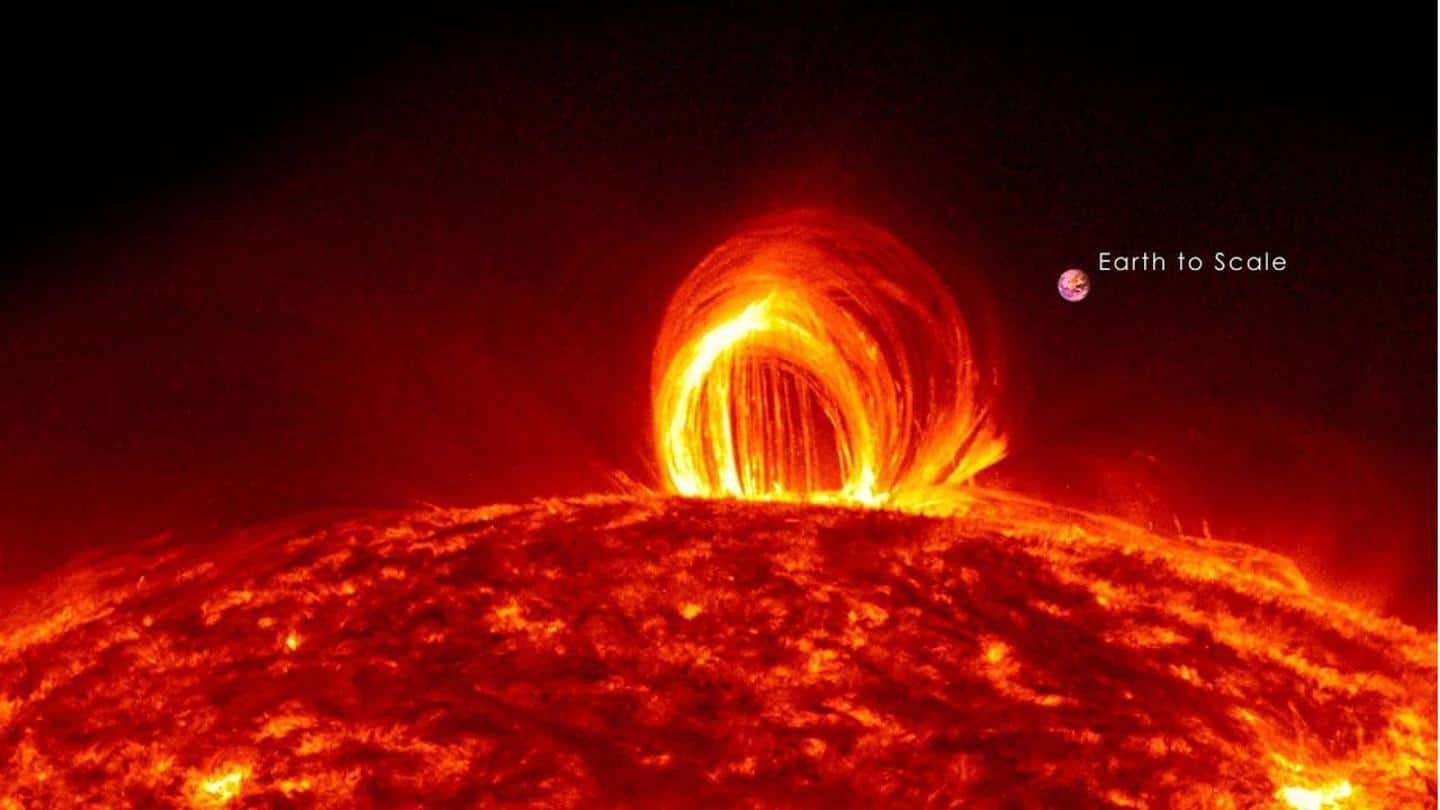
Massive Earth-directed solar flare may cause radio blackouts today
What's the story
A gigantic solar flare has erupted from the Sun and might cause radio blackouts in several parts of the world today. The radiation burst emanating from the sunspot AR3058 was unleashed on July 14. It is an M-class flare (the second most powerful) and GPS users have been asked to stay vigilant during dawn and dusk. Northern lights might also be caused.
Context
Why does this story matter?
The Sun has an 11-year solar cycle and is currently in its active phase. As a result, incidents of solar fares are likely to increase in the coming weeks. Radio signals are intrinsic to communications and navigation systems worldwide and such flares might greatly hamper activities. Thankfully, our atmosphere protects us from the harmful radiation emanating from these cosmic rays.
Definition
What are solar flares?
Solar flares are localized eruptions of electromagnetic radiation on the Sun's surface. When these flares head toward the Earth, the energy packed within them ionizes the upper layers of our atmosphere, leading to the loss of signals and hindering radio communication. Solar flares are of five different types- A, B, C, M, and X, with X being the most powerful.
Twitter Post
An alert posted by a space weather physicist
The long snake-like filament cartwheeled its way off the #Sun in a stunning ballet. The magnetic orientation of this Earth-directed #solarstorm is going to tough to predict. G2-level (possibly G3) conditions may occur if the magnetic field of this storm is oriented southward! pic.twitter.com/SNAZGMmqzi
— Dr. Tamitha Skov (@TamithaSkov) July 16, 2022
Possibility
How will this flare impact us?
The new M-class flare directed toward Earth might result in blackouts to GPS navigation systems and disrupt the journeys of ships and small aircraft. Hence, users should stay alert. Ham radio operators may face some disruptions, and Northern lights are also a possibility. Scientists are unsure whether a geomagnetic storm is on the way in the coming days.
Information
Sunspot AR3038 was a cause of worry recently
Recently, scientists were worried about the activity arising out of the gigantic sunspot AR3038, which doubled in size in 24 hours. Its hazardous area faced the Earth directly and posed the risk of pushing out flares toward us. Thankfully, it did not come to pass.